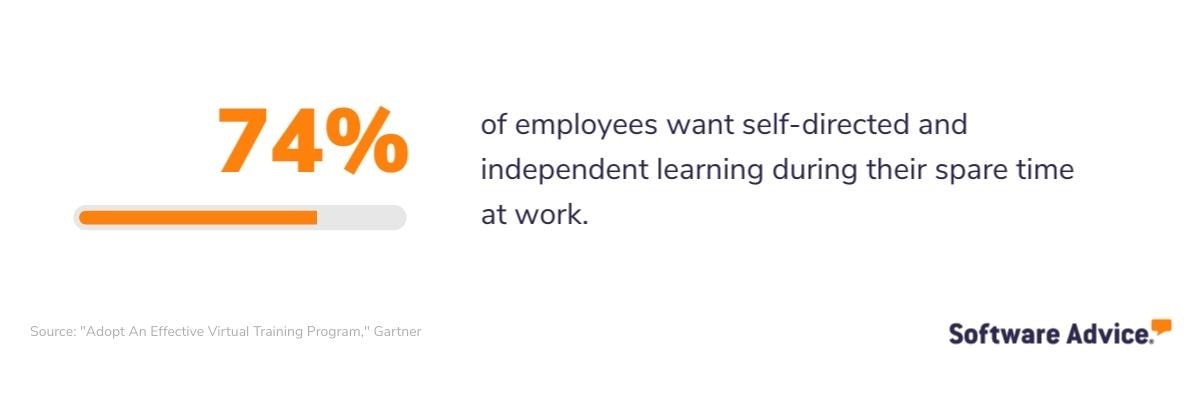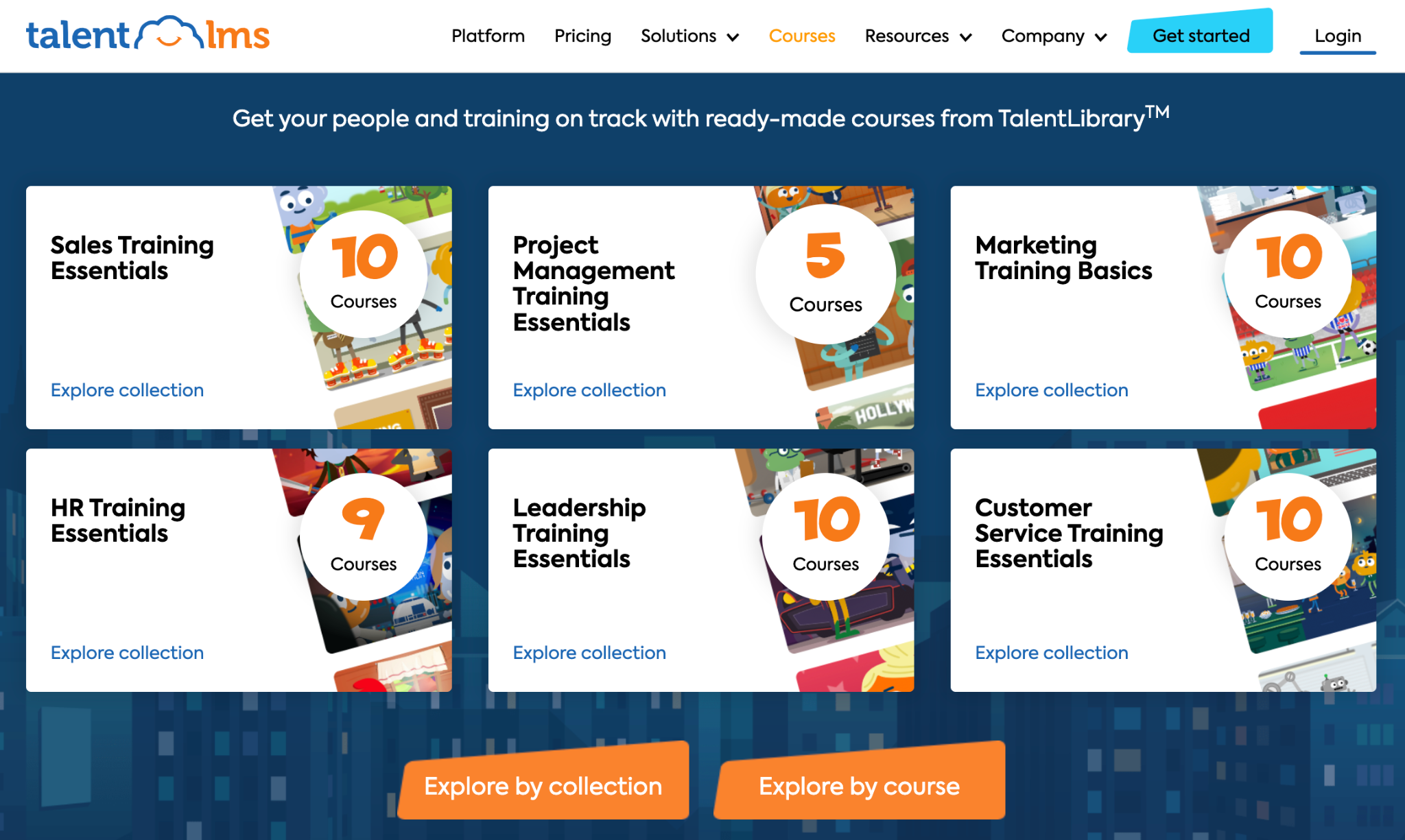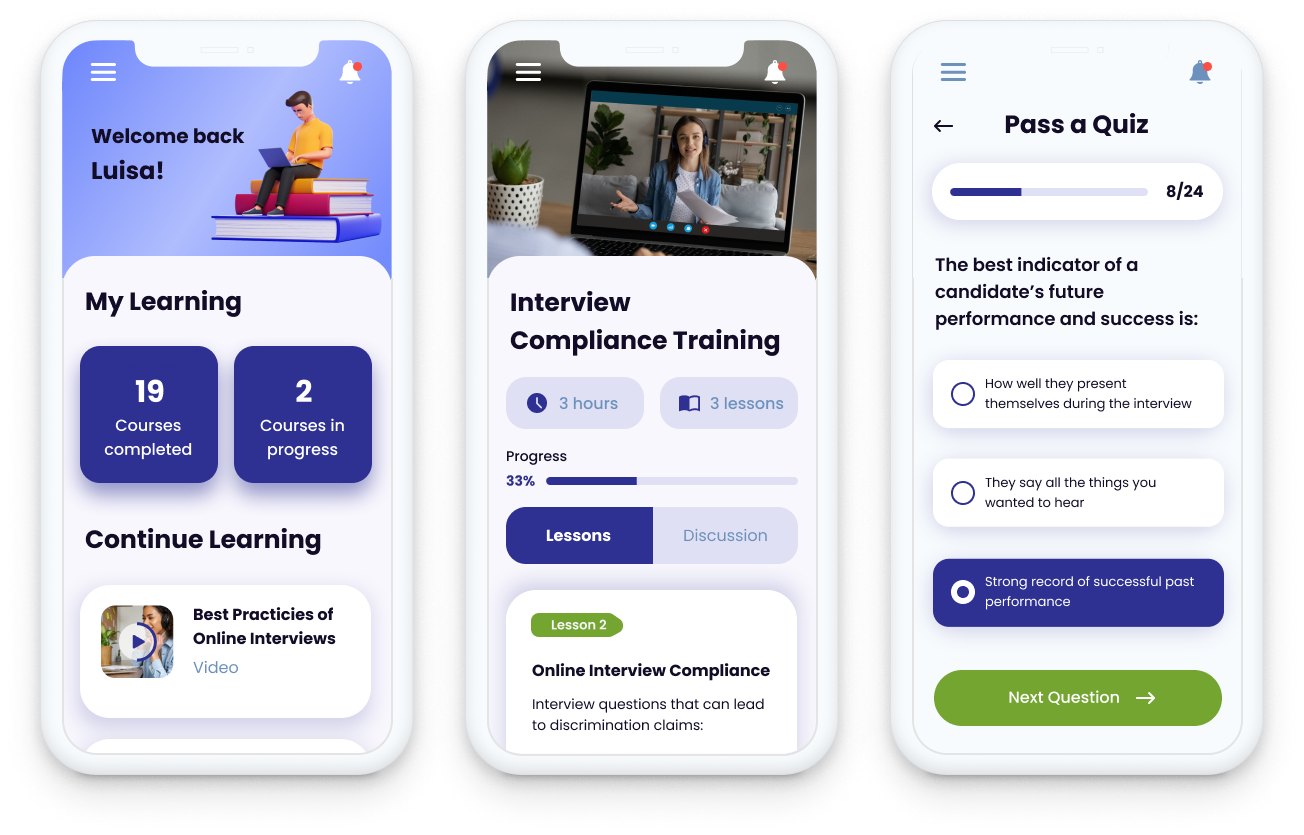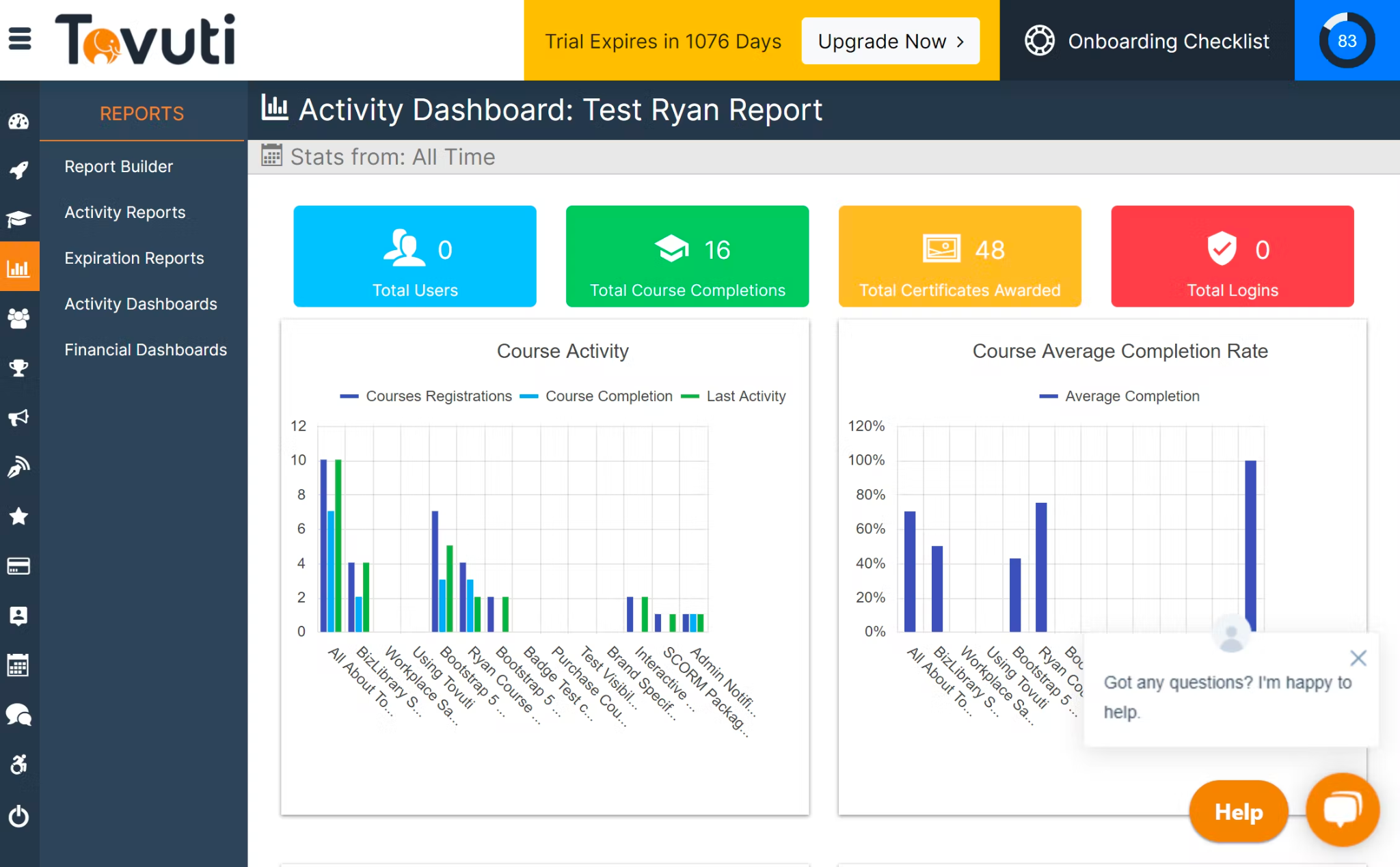4 E-Learning Advantages To Support Your LMS Business Case
As a training manager or people director, you know that providing employees with learning opportunities that align with their needs is essential to getting the best results out of your training programs. And as it turns out, the majority of employees want access to self-directed, independent learning time:

Adopting an e-learning program can make this happen, but convincing organizational leaders to get on board with new tech investments isn’t always easy—especially considering that 51% of organizations surveyed for Software Advice’s Toxic Culture Survey[*] either cut or opted not to increase their learning and development budget in 2022.
If you’re considering adopting e-learning to bolster your employee training strategy, we’re here to help you understand the advantages of this tactic in order to make a business case that supports the transition from more traditional training methods to e-learning.
First, what is e-learning?
E-Learning is a training and educational strategy that uses the internet and software, such as learning management systems (LMS), to deliver anytime, anywhere instruction. While this strategy has been around since 1999, it’s gained popularity in recent years due to the rise of remote work.
What does e-learning training look like?
E-Learning training can be a variety of things. On one end, it can entail using an external online course provider, such as LinkedIn Learning or Udemy, while on the other, it can involve creating and managing your own custom training content.
Learn about creating your own training course with our guide: How To Build E-Learning Modules That Improve Training Retention
The advantages of e-learning for businesses

More scalable training programs
The limitations of traditional training methods (such as relying on current employees to have time in their schedule to lead sessions, or being restrained to a training class size due to the physical location it’s held in) do not apply to e-learning. Instead, e-learning courses can be accessed from anywhere at any time, making training programs that utilize this strategy highly scalable.
For example, just one online course can be offered to a limitless number of employees, which means that the time and money put into creating training materials will have a greater return on investment (ROI) than a traditional learning experience would.
To do: Look for a training tool with a library of pre-built courses
One way to further maximize your investment in e-learning is to invest in an LMS with a library of premade courses. That way, you’ll be able to quickly start offering online classes to your workforce, even if it takes a while to master the use of the course authoring tool to create your own modules.

A preview of pre-made course collections in TalentLMS[1]
When presenting your business case for e-learning, make sure to include this advantage as a selling point, because as soon as your platform is set up, employees will be able to access learning material.
Already have an LMS or other e-learning platform? Learn how to maximize the ROI of your investment from an experienced people director: 3 HR Applications for Your Learning Management System
On-the-go accessibility for employees
According to Software Advice’s Toxic Culture Survey[*], the majority (65%) of employees work remotely at least part of the time. Using an e-learning platform to deliver online training provides the level of flexibility that’s needed to ensure employees can complete modules from wherever they’re working. Plus, training content is typically accessible from multiple devices, including smartphones, which further adds to the accessibility of this training strategy.
To do: Create mobile-friendly, microlearning-style courses
Not every content format is mobile friendly. For example, learners may be less likely to engage with text-heavy slide decks and PDFs while completing modules from their smartphone. In order to create the best experience for your employees, follow these instructional design best practices:
Keep modules focused and short: While there may be a temptation to cram all of the information you want an employee to learn into a 20- to 30-minute course, it’s a much better learning experience for employees to have multiple modules that are five minutes or less long to complete. This will make it easier for employees to set aside time for trainings, and it’ll also improve retention rates (considering the average attention span today is just over eight seconds long).[2]
Learn more about bite-size learning: What is Bite-Sized Learning? Benefits and Trends
Reduce the number of clicks required to navigate a course: For maximum ease-of-use, try to limit the number of clicks or taps a learner will have to take to complete a module. On that same token, avoid requiring users to zoom into elements in order to properly read or interact with them.
Don’t overload your course with text: If there’s an opportunity to incorporate a more engaging content type (such as a video, visual aid, podcast clip, or thought exercise) rather than a block of text, this is the route to take.

Three examples of a mobile training interface from ScienceSoft[3]
When organizing your business case for e-learning, include a statement on how little of a time commitment e-learning takes for employees. Shorter e-learning modules means faster upskilling and less productive time lost when compared to traditional training methods.
Access to automated reporting and analytics
Tracking the effectiveness of traditional employee training methods (such as classroom-style learning, independent study, and mentorships) is tricky. You can ask for feedback on sessions from employees or test them afterwards to measure what they’ve retained, but if your strategy incorporates a variety of methods, there’s not a straightforward way to assess engagement levels and performance overall.
Fortunately, most learning management systems come with a reporting and analytics feature that automates the task of tracking your employees’ progress and performance—meaning, less effort is required from your team to get access to in-depth reports.
To do: Determine which statistics matter for your goals
Not only do most LMS offer analytics functionalities, typically these tools allow you to customize your dashboard and export reports as well. This is great news for HR professionals who need to communicate the ROI of their LMS by demonstrating to C-level leaders how effective their training programs are.
When customizing your dashboard, prioritize metrics that are tied to your training and development goals. For example, if you’re using your LMS to deliver compliance training, completion rates are probably the most important metric to track. But if you’re primarily using a course library to allow employees to take development into their own hands, then things such as logins, time spent on training, and certifications might be more valuable.

An activity dashboard shows registrations, course completions, and last activity taken in Tovuti (Source)
Standardized training experiences
Lastly, achieving consistency when it comes to your employees’ learning experience is a big benefit of using e-learning in your training strategy. This is especially important if your organization has locations or offices in other areas, because you’ll be able to standardize company-wide trainings by turning them into online courses.
For instance, you can create a new hire onboarding path in your LMS that includes modules for things such as your company values, employee referral program, or how to access the employee self-service portal.
To do: Create a set of standards or best practices for admins to follow when creating custom courses
Achieving a consistent digital learning experience requires level-setting with those who will have admin access to the platform. There needs to be an agreement on the process for creating a new e-learning course, as well as a set of brand standards that apply to all official course material.
In order to help you with this step, we’ve come up with a list of questions to guide you:
Who will have admin access to the course authoring tool?
For those who don’t have access, what will the request process for a new course look like?
Who within the organization will be responsible for reviewing course materials and ensuring that they meet brand standards?
Who within the organization will be responsible for creating assets, such as infographics and videos?
What will the turnaround time be for requested learning material for an online class?
What kind of brand standards are important to us? Is there a certain font and color palette that we should stick to?
What kind of external content are we comfortable with featuring in our courses? Should we stick to reliable sources only?
It’s important to communicate in your business case for e-learning that standardizing your learning experience will help minimize instances of training inconsistencies in employees. And while you can try to standardize traditional, in-person training, there’s always a risk of unconscious bias.
Check out this quick video that summarizes three tips for using e-learning to train employees:
3 disadvantages of e-learning to be aware of
As is true for most business strategies, there are some downsides to using e-learning for employee training. In order to make sure you’re fully educated on the topic, we’ve included a summary of the three most-frequently cited disadvantages of the tactic.
E-Learning doesn’t work for all employee training: While e-learning can revolutionize your training strategy, it’s not a replacement for on-the-job, in-person training. When it comes to building technical skills or mastering tedious internal processes, you’re better off having a senior employee or manager train employees hands-on. For this reason, it’s important to decide how your e-learning program will complement in-person training and vice versa from the outset.
E-Learning requires an upfront investment: Whether you choose to license an LMS or go month-to-month, the fact remains that most of these systems aren’t free (some are though, and you can find them here: Top 5 Free and Open Source LMS Tools). For an idea of how investing in an LMS or e-learning platform will affect your budget, download our LMS pricing guide.
E-Learning lacks personalized feedback and mentorship: The real-time feedback and guidance that comes from face-to-face training is difficult to replicate in an online learning environment. One way to alleviate this is to encourage employees to write down any questions they have during their training sessions so that they can discuss them with their manager later on.
Make e-learning a part of your employee training strategy
To wrap this up, we’ll leave you with this final thought: E-Learning doesn’t need to be your primary employee training strategy—it just needs to be a part of it. As we mentioned at the top of this article, today’s employees want independent, self-paced learning, and incorporating e-learning into your training program is an effective way to offer them that.
When presenting your business case for e-learning to your organization’s leaders, use the four benefits laid out above to illustrate the value of this strategy. And don’t miss our related content, Making an LMS Business Case? Know These 5 Answers First, which outlines five common arguments a CFO or other executive might present against investing in an LMS and how to counter them.
The majority (86%) of businesses that increased their L&D budget for 2022 say they plan to spend more on learning and training technology.* Join your peers; connect with an advisor to find a learning management system that works for your organization today.
Survey Methodology
* Software Advice’s 2022 Toxic Culture Survey was conducted in January 2022 among 294 HR leaders at U.S. companies. An HR leader is defined as any HR employee with the role of HR manager or higher at their organization. The goal of this survey was to learn how the transition to hybrid and remote work impacted toxic employee behaviors.
Sources
TalentLibrary™, TalentLMS
Our attention span is shorter than a goldfish’s. Here’s what we can do about it | Commentary, Orlando Sentinel
Custom LMS: Key Features, Benefits, Development Costs, ScienceSoft